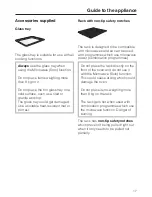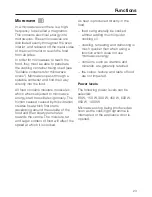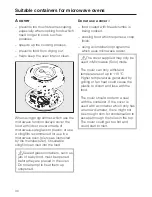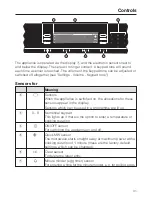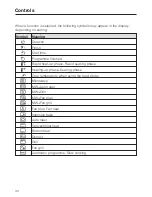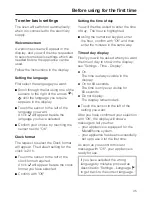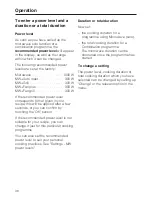
Microwave
_
In a microwave oven there is a high-
frequency tube called a magnetron.
This converts electrical energy into
microwaves. These microwaves are
distributed evenly throughout the oven
interior and rebound off the metal sides
of the oven interior to reach the food
from all sides.
In order for microwaves to reach the
food, they must be able to penetrate
the cooking container being used (see
"Suitable containers for microwave
ovens"). Microwaves pass through a
suitable container and find their way
directly into the food.
All food contains moisture molecules
which when subjected to microwave
energy start to oscillate vigorously. The
friction caused caused by this vibration
creates heat which first starts
developing around the outside of the
food and then slowly penetrates
towards the centre. The moisture, fat
and sugar content of food will affect the
speed at which it is cooked.
As heat is produced directly in the
food,
– food can generally be cooked
without adding much liquid or
cooking oil.
– cooking, reheating and defrosting is
much quicker than when using a
function which does not use
microwave energy.
– nutrients, such as vitamins and
minerals, are generally retained.
– the colour, texture and taste of food
are not impaired.
Power levels
The following power levels can be
selected:
80 W, 150 W, 300 W, 450 W, 600 W,
850 W, 1000 W
Microwaves stop being produced as
soon as the cooking programme is
interrupted or the appliance door is
opened.
Functions
23
Summary of Contents for H 5080 BM
Page 2: ...2 ...
Page 74: ...74 ...
Page 75: ...75 ...
Page 76: ...Alteration rights reserved 22 1311 H 5080 BM H 5088 BM M Nr 07 650 220 02 ...









